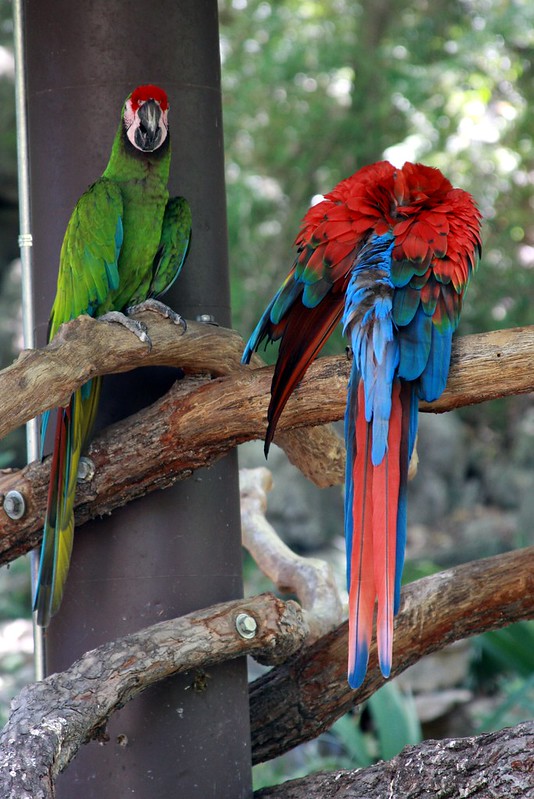 |
| Australian Zebra Finch Taeniopygia guttata castanotis - pair, female on left. Capertee Valley,Blue Mountains, NSW, Australia. (Photo credit: Wikipedia) |
Famous breeds like the budgerigar (know as the parakeet in some countries), cockatiel, zebra finch, lorikeet, and the cockatoo all became available throughout the world via importation from Australia.
When our ancestors first discovered the Australian continent they found many types of animals that were unique to this part of the globe, such as the now infamous 'duck-billed platypus' and the 'echidna' (egg-laying mammals! How strange must that have been?); marsupials such as the 'kangaroo', 'wallaby', 'Koala' and many new and unique bird species; many of which were very brightly coloured. So they desired specimens of these birds to take home, and in doing so boosted the fondness of exotic pet bird keeping.
Starting with the smaller breeds; Australian finches that are popular as pets include the 'star finch', 'Gouldian finch' and the well known and readily available at a low price 'zebra finch'. However, there are much more.
Small to medium sized parrot-like species from Australia include the most popular small pet bird of all, the 'budgerigar' (or 'parakeet'). The almost as popular 'cockatiel' is also an Australian native, plus no end of other well-known pet birds. The list is almost endless: 'lories' and 'lorikeets' (several types of these), parakeets such as 'turquoise', 'Bourke', 'splendid' 'elegant' and 'red-rumped' to name a few, there's loads more. The medium sized 'Eclectus parrot' also hails from this part of the world.
The 'rosellas' are also medium parrot from Australia and about 6 different varieties are used as pets; 'Eastern', 'Northern', 'Western', 'Crimson', 'green', and 'pale-headed'. All are unique and different in their own way but are closely related. Rosella is known for their strikingly rich coloring, making them a very desirable pet.
Finally the big daddy of Australian pet birds, the 'cockatoo'. There are about 20 different species of cockatoo but not all are popular as pets, and believe it or not the famous 'cockatiel' mentioned earlier is a member of this bird family but of course nowhere near as large as some of its cockatoo cousins. All birds in the cockatoo family are distinguishable by the crest of feathers on the top of the head.
Many breeds of Australian birds live in massive flocks in the wild. The sight of hundreds of budgerigars, cockatiels, finches or lorikeets flocking together is an awe-inspiring sight, and very noisy.
To summarise there is a massive range of Australian birds available as pets all over the world. Many are very colorful, easy to keep, very hardy and all have unique and sometimes entertaining characteristics. The least costly of exotic pet birds are also native Aussies. Is it any wonder that these pet birds are so popular?
|























